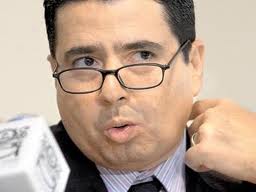Where did they all come from and what do they mean?

Gay men and gay women.

Bisexual.

Transgender.
___________________________

The rainbow flag is the most widely used and recognized symbol of the gay pride movement. The flag was developed by San Francisco artist Gilbert Baker in 1978. At the time, there was a need for a gay symbol which could be used year after year for the San Francisco Gay and Lesbian Pride Parade. Baker took inspiration from many sources--the hippie movement to the black civil rights movement--and came up with a flag with eight stripes.
Baker explained that his colors each stood for a different aspect of gay and lesbian life:
- Hot pink for sexuality.
- Red for life.
- Orange for healing.
- Yellow for the sun.
- Green for nature.
- Blue for art.
- Indigo for harmony.
- Violet for spirit.
Baker and thirty volunteers hand-stitched and hand-dyed the flags for the 1978 parade, and they were an instant hit. But when he took his design to the San Francisco Flag Co. to have it mass-produced for the 1979 parade, he had to remove the hot pink stripe. At that time, pink was not a commercially available color.
Later that year, when Harvey Milk, was assassinated, the 1979 Pride Parade Committee realized that baker's flag was the perfect symbol under which the LGBT community should unite. The committee got rid of the indigo stripe to make the colors evenly divisible along the parade route: red, orange, and yellow on one side of the street; green, blue, and purple on the other.
This is the flag we see, and use, and fly, today.
________________________

Most everybody recognizes the Pink triangle as a symbol taken directly from the Nazi concentration camps. When concentration camps are mentioned, most people tend to think of the Holocaust--for good reason--but the fact is that there were many homosexual prisoners in those camps as well.
The real story of the Pink Triangle began prior to World War II, Paragraph 175, a clause in German law, prohibited homosexual relations. In 1935, during Hitler's rise to power, he extended this law to include homosexual kissing, embracing, and even homosexual fantasies. Over 25,000 people were convicted under this law between 1937 and 1939 alone, and were sent to prisons and later concentration camps. Their sentence also included sterilization, most commonly in the form of castration. In 1942, Hitler extended the punishment for homosexuality to death.
Prisoners in Nazi concentration camps were labeled according to their crimes by inverted colored triangles.
- Green triangles were for regular criminals.
- Red triangles were for political prisoners.
- Two overlapping yellow triangles--to form the Star of David--were given to Jewish prisoners.
- Pink triangles were given to homosexual prisoners.
- Pink and Yellow overlapping triangles went to gay Jews, the lowest form of prisoner.
Although homosexual prisoners were not shipped en mass to the Auschwitz death camps like so many of the Jewish prisoners, there were still large numbers of gay men executed along with other non-Jewish prisoners. The real tragedy though occurred after the war. When the Allies defeated the Germany and the Nazi Regime, the political and remaining Jewish prisoners were released from the camps; the
regular criminals were not released for obvious reasons.
The homosexual prisoners were never released though because Paragraph 175 remained West German law until 1969, so gay men and women watched other prisoners freed, and then spent another twenty-four years in prison.
In the 1970s, the pink triangle was used in conjunction with the gay liberation movement, and in the 80s, ACT-UP [AIDS Coalition To Unleash Power] adopted the it as their symbol, but turned it upright to suggest an active fight rather than passive resignation.
There are also people who were the triangle pointing up if they know someone who has died of AIDS.
The pink triangle is a symbol closely connected to oppression and the fight against it, and stands as a vow never to let another Holocaust happen again. Like the word "queer," it is a symbol of hate which has been reclaimed and now stands for pride.
______________________

One symbol which continues to remain popular is the lower case Greek letter lambda. It was originally chosen by the Gay Activists Alliance of New York in 1970--a group which broke away from the larger Gay Liberation Front at the end of 1969, six months after it's foundation in response to the Stonewall Riots.
Because of its official adoption by the GAA, which sponsored public events for the gay community, the lambda soon became a quick way for the members of the gay community to identify each other. The reasoning was that the lambda would easily be mistaken for a college fraternity symbol and ignored by the majority of the population.
Other meanings of the lambda symbol include:
- The Greek letter "L" stands for "liberation."
- The Spartans believed that the lambda represented unity.
- The Romans took it to mean; "the light of knowledge shining into the darkness of ignorance."
- The synergy which results when gays and lesbians work together towards a common goal.
- The theory that straights and gays, or gays and lesbians, or any pairing of these three, are on different wavelengths when it comes to sex, sexuality, or even brain patterns.
- An iconic rendering of the scales of justice and the constant force that keeps opposing sides from overcoming each other. The hook at the bottom of the right leg would then signify the action and initiative needed to reach and maintain balance.
Whatever the lambda meant or means today, it's everywhere. Even though at one time it acquired a strictly male connotation, it is used by both gays and lesbians today. Back in December of 1974, the lambda was officially declared the international symbol for gay and lesbian rights by the International Gay Rights Congress in Edinburgh, Scotland.
_________________

The Red Ribbon Project was created by singer/songwriter Paul Jabara and the New York-based Visual AIDS group in 1991. Visual AIDS is a charity group of art professionals aimed at recognizing and honoring friends and colleagues who are dying, or have died, of AIDS. Visual AIDS not only encourages art organizations, galleries, museums, and other AIDS organizations to commemorate those who have died of AIDS, but also to educate the public about the transmission of AIDS and HIV and the needs of those living with AIDS.
The red ribbon was originally inspired by the yellow ribbons prominently displayed during the Gulf War in support of U.S. soldiers. The color red was chosen because it is the color of blood and its symbolic connection to passion and love. The red ribbon made its public debut when host Jeremy Irons wore it during the 1991 Tony Awards. Since then, wearing the red ribbon has become a fashion statement and extremely politically correct.
There are those who feel that the red ribbon has lost it's importance, and is now simply lip service to AIDS causes, however, the Red Ribbon Project is still going strong and remains a driving force behind AIDS awareness. It is the Project's sincerest hope that one day it will no longer be needed.

The White Knot.
The symbol for Marriage Equality.
The White Knot is the symbol for marriage equality.
Wear it to show your support and to create conversation.
Use it to tell everyone that equal rights are important.
Share it so that all loving couples can have the same rights.
Everybody deserves the right to Tie The Knot!





















